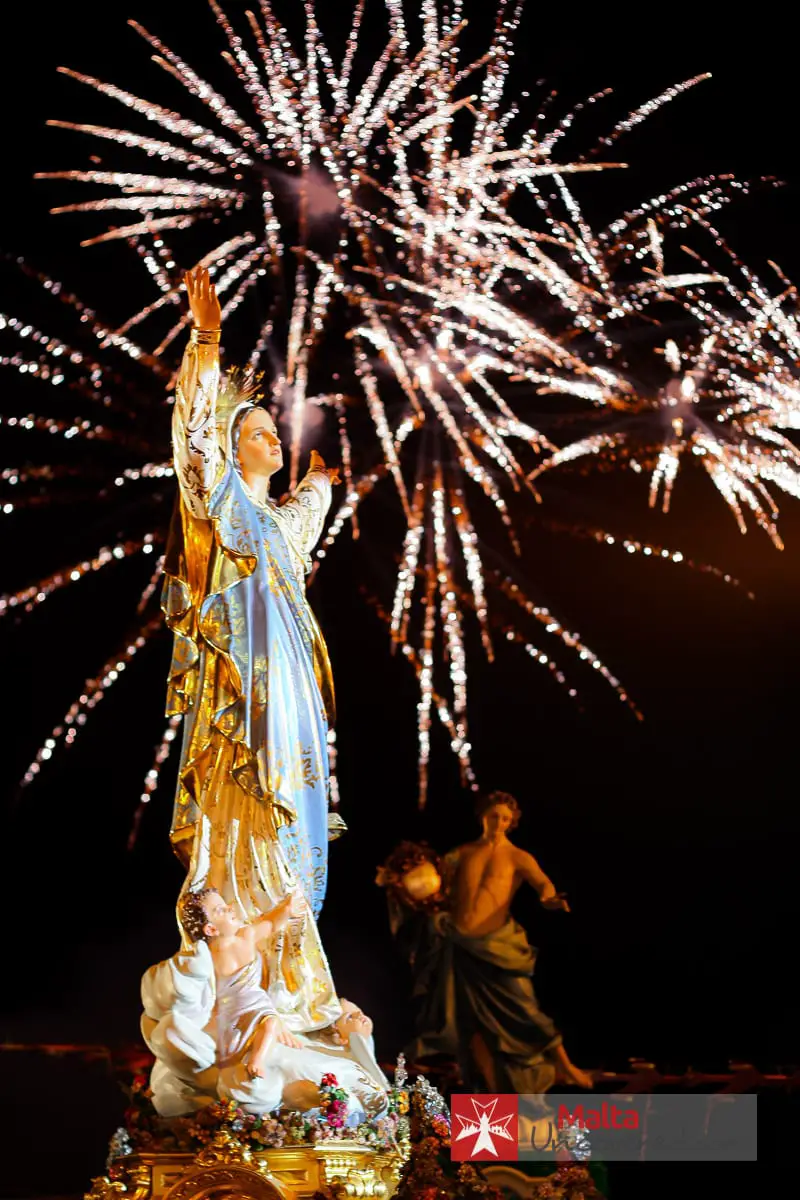Maltese culture is generally considered to be a mix of influences brought to the island of Malta by the various rulers it has seen come and go over many centuries. It is a fact that the Phoenicians, Romans and Arabs all left their stamp on the customs and traditions of the Maltese and Malta’s history.
However, age-old traditions have travelled through generations and have allowed the Maltese to retain their roots. A likely reason for the survival of originally Maltese traits is the drive to establish an own identity in the face of foreign rulers, and more certainly the reliance on maritime trade has helped to shape and conserve what we know now as being Maltese culture.
Save big on sightseeing with iSeeMalta, with hop-on/hop-off buses and boats, combo tickets for museums and the ferry to the Blue Lagoon!

The predominant religion in Malta is Catholicism, which is followed by over 90% of the population and therefore has a reasonable amount of authority compared to other European states. Mass attendance is also relatively high in this regard, with 52.6% of the population attending Sunday mass, according to 2005 data. Seemingly following a European trend, however, the younger generations seem to be becoming less interested in practising religion.
Catholicism is believed to have been brought to Malta by St. Paul, who was a Christian missionary and lived around A.D. 60. St Paul was shipwrecked at, what is now known as, St Paul’s Bay and converted the then pagan population of Malta, starting yet another chapter in Malta’s rich culture.
The Maltese honour their village’s patron saints through celebration in the so-called Maltese festa or feast. This religious celebration forms an important part of culture in Malta and around 80 such events are held during spring and summer months in Malta and Gozo.
Malta is seen by many as being a nation of opposites and opposition. Whereas the Maltese people are generally friendly and welcoming, Mediterranean temperament comes forward in opposition of sides at many levels, but mainly in sports, politics and local band clubs. Opposition and choosing sides gives a sense of belonging and identity and this is something that is evident in Maltese culture, in which opposition sometimes flows into conflict.
Followers of either side of the contrasting entities often lose touch with reality and conflict has at times escalated and become physical. This is not something that occurs regularly but temperament (and not aggression) is part and parcel of life in Malta, where something as subtle as whispering is a rare occurrence and where oral communication is often much louder than in Northern Europe.
The most popular sports in Malta is without doubt football, as is the case in most European countries. The local football league is followed by many, but since the number of professional football players is limited to only a few, the standards of play are unfortunately a little below par compared to the rest of Europe. As a result, most football lovers support foreign clubs and national teams. Usually, England and Italy are the countries of choice, one is supported for its historical connection with Malta, the other because it is simply the closest geographically and many Italian TV channels can be received all over the island.
During World Cup or European Cup football/soccer tournaments the country usually succumbs to a true craze for football and friendly rivalries between supporters of Italian and English teams are all around. The same goes for the associated national flags which can be seen hanging from windows and balconies all over the island. It’s as if during that one month every two years the Maltese adopt a second nationality, which is likely to be a rare occurrence worldwide.
As much as the Maltese love to celebrate victories in football of their favourite national squad, similar displays of festivities fill the streets in celebration of the victory of the preferred political party.
Malta’s political system is based on two large political parties and a number of much smaller political movements that have never managed to appeal to large enough numbers to be able to obtain a seat in parliament. The rivalry between the two main parties (the Nationalist Party and the Labour Party) is deep-rooted and many Maltese prefer either party because their families have always used their votes for the same political party.
The names of the parties should not be taken literally, and hardly have any connection to foreign political parties. A funny contradiction, for example, is the fact that the Nationalist party fought for Malta’s accession to the EU.
Maltese band clubs organise annual band marches that form an important of the village’s festa celebrations. Whereas the smaller villages have only one band club, larger towns often have competing band clubs, who often divide the local community into two opposites. Conflict is rare though, and this opposition is usually friendly competitiveness that comes forward during the festive season (in summer). With the exception of this time of year, band clubs are merely a place for social gathering and not a source of conflict.
Get my recommendations on the best day trips, boat trips, excursions and activities and book in advance!

Around 700 BC Malta was inhabited by the Ancient Phoenicians, who were particularly interested in the use of the various harbours and ports around the Maltese islands that were easily accessible. Within around two hundred years (500 BC) Malta had become a Punic colony and Phoenician traces are still found today in Maltese culture, traditions and language.
Malta was under Roman control between 218 BC and 395 CE. During the later part of Roman rule, Malta had the power to control domestic affairs and were allowed their own currency. The famous shipwreck of St. Paul took place during this period, and it is St. Paul who brought Catholicism to the Maltese and founded the Church of Malta, laying the foundations for religion as part of Maltese culture.
When the Roman Empire fell in 395 CE, Malta was placed under the eastern portion of the old Roman Empire, which was ruled from Constantinople. This change in ruling brought several Greek families to Malta, introducing various traditions, proverbs and superstitions some of which are still present in the Maltese culture of today.
The Arab invasion of 870 CE left a mark on the Maltese people and their culture. The ruthless Arab oppressors of the time are said to have had a devastating effect on the population of the Maltese islands. Some historians speculate many Maltese were killed during and after the invasion, and that others were carried off into slavery or fled to Sicily, amongst other places. Malta is said to have been merely left a resource of food and timber for the Arab invaders, leaving the islands scarcely populated. At around 1090, the Norman invasion saw an end to Arab rule and Malta’s population is said to have amounted only to no more than 1,200 households, the larger part originating from the wider Arab world. The effects of the Arab invasion are still visible in the names of many Maltese towns and villages (in the case of Mdina, ‘medina‘ means “city”) and in the spoken form of the Maltese language.
During the rule of the Knights of St. John (also known as the Knights of Malta), the population of Malta increased significantly, from around 25,000 in 1535 to over 54,000 in 1632. One of the primary reasons was an improvement in health and welfare, but also immigration from Western Europe.
This period, under the rule of the Knights of St. John, is often referred to as the Golden Age for Malta, considering the flourishing of Maltese culture with the architectural and artistic embellishment witnessed during the Knights’ rule. The various advances in overall health, education and wealth of the Maltese are also an important part of this perception of Malta’s Golden Age.
The Knights introduced Renaissance and Baroque architecture in Maltese towns and villages, which is still evident in many places of interest, most notably the capital city Valletta and the Valletta Grand Harbour. In education, the Knights laid the foundation of the present-day University of Malta, which as a result is one of the oldest extant universities in Europe.
In 1798, Malta fell under French rule after the Knights surrendered Malta to Napoleon Bonaparte’s forces. At that time, the population of Malta was recorded being at 114,000.
Although the period under French rule was rather short (1798-1800), the impact on Maltese culture was significant. Some French customs and expressions were introduced into every day Maltese language: Words such as bonġu (“good day”) and bonswa (“good evening”) are still used today. Malta was given a Constitution within six days by Napoleon, slavery was abolished, a secondary school system established, the university system was revised almost completely and the legal system of Malta was enhanced by a new Civil Code of law.
French rule did not only bring improvements to Malta and its people, however. Maltese churches were ransacked, being robbed of gold, silver and precious art, which sparked an uprising that ended in the execution of a number of Maltese patriots.
Maltese culture, language and politics underwent radical changes under British rule, from 1800 to 1964. The addition of Malta to the British Empire was a voluntary request made by the Maltese people in an attempt to rid the Maltese islands of the French. Its strategic location in the centre of the Mediterranean made Malta an excellent station for British forces, whilst the opening of the Suez Canal further improved the importance of Malta as a supply station and naval base.
While British rule ended in 1964, its traces and influences in Maltese culture are still visible. Maltese versions of English words are often used in more formal language, while the more wealthy families often use English as the primary language used in the household and in some instances children are brought up without being taught Maltese.
In material form, many remnants of British rule remain, with the most simple examples being mail collection boxes and phone boxes having been left in their original placements.
Check out my two guidebooks full of local knowledge and my best recommendations for your trip, and up-to-date for 2024!
Malta & Gozo guide book
Valletta: An Insider’s Guide to Malta’s Capital
Take the hassle out of planning your trip to Malta and be an informed traveller!

Edward is the Founder and Editor of Malta Uncovered and author of two guidebooks on Malta and Valletta.
As a tourist-turned-expat with Maltese roots, he knows the islands inside out and helps thousands of visitors enjoy a memorable trip every year.
Get the best travel tips from Malta Uncovered delivered to you in bite-sized chunks by email. (Unsubscribe at any time!)
Was this article helpful? Share it with your friends!
Get the most out of your visit to Malta with Malta Uncovered guidebooks – full of local knowledge and up-to-date for 2024!
